Europe's best road trips: Seven epic drives to inspire your next European adventure
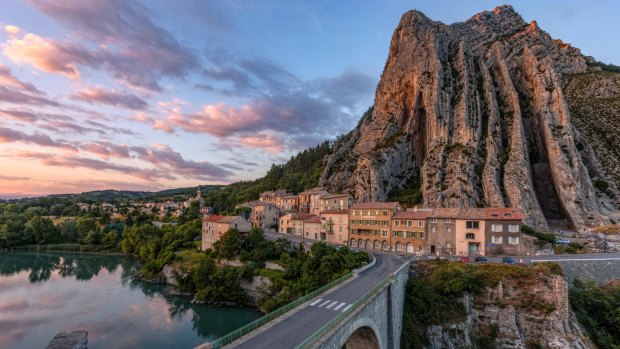
A road trip in Europe packs more punch-per-kilometre than any continent on earth.Credit: Alamy
What is it that sets you on your journey? Is it a love of wondrous landscapes? Of seeking out regional food and wine? Maybe tracing fascinating local culture and history? How about all of the above?
Whatever interests you wish to pursue during travel, a road trip in Europe packs more punch-per-kilometre than any continent on earth.
Remember though that motor-touring in 2022 is different to how it used to be, with the continent's progressive lawmakers pushing for a transition away from fossil fuels.
The good news is, sustainable options are more accessible than ever before: electric car hire is getting easier, charging stations are proliferating, and the availability of eco-friendly farm stays continues apace, as does our own change of mindset – to go slowly, more gently and mindfully.
In this extract from Lonely Planet's new book, Epic Road Trips of Europe, we offer a selection of drives in different parts of the continent, each following a different theme, to inspire your own odyssey on four wheels.
GOURMET
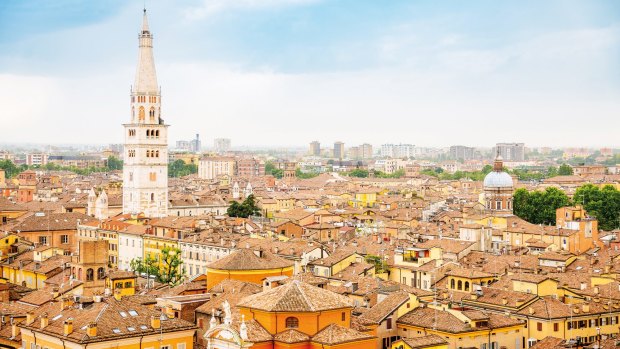
Modena is home to one of the world's best restaurants, Osteris Francescana.Credit: Francesco Ricardo/Getty
WHERE: ITALY
START: Parma
END: Brisighella
DISTANCE: 159 kilometres
BEST TIME: May to June, September to October are more pleasant and with many local food festivals
The road the Romans built through Emilia-Romagna, the Via Emilia, still connects a string of places today – Parma, Modena, Bologna – whose names represent some of the world's most sought-after foods. Begin in Parma where the delis hang Parma hams as meticulously as the contents of an Armani store. At each cellar the air smells sweet with curing sugars of the meat, aged between 400 days and three years. Leaving Parma via Via Emilia – or rather its modern incarnation, Highway SS9. It's only in this land of plenty that you could once produce Parmesan. See how it's made at Fattoria Marchesini, a farm shop-B&B in Reggio Emilia. Next it's on to Modena, where Osteria Francescana, founded by Modena-born chef Massimo Bottura, is a three Michelin-starred restaurant that regularly tops the World's Best list. Bologna is a dividing marker, between the culinary culture of Emilia to the west – built on pigs, cows and the Celtic traditions of northern Italy – and that of Romagna, which shares more in common with the sheep, goat and olive-based agriculture of southern Italy. End your road trip in the latter, detouring from the Via Emilia to Brisighella, a medieval village southeast of Bologna. At Terra di Brisighella, the local olive oil collective's shop, the oil tastes like a distillation of Italian sunshine.
HISTORY
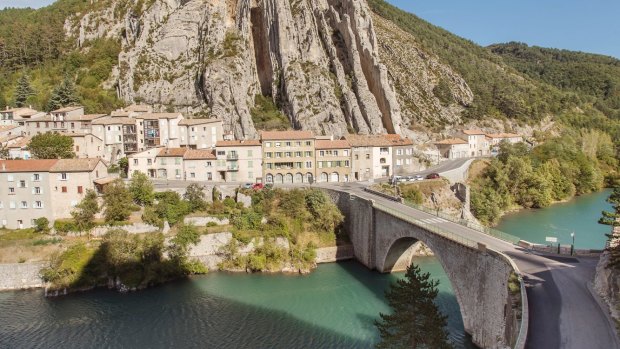
The Route Napoleon takes you past the Durance River in Sisteron. Credit: Philip Lee Harvey/Lonely Planet
WHERE: FRANCE
START: Golfe-Juan
END: Grenoble
DISTANCE: 328 kilometres
BEST TIME: If inexperienced driving in snow conditions and chains, avoid late autumn to early spring
The Route Napoleon is a drive of about six hours. But it took Napoleon Bonaparte and his men seven days to travel along it. His aim was to take the difficult mountain road, avoiding the more obvious route to Paris up the Rhone valley, and win back the throne he had been exiled from the previous year. As it leaves Grasse the Route Napoleon takes on an epic quality and zigzags into the mountains. Stop at the entrance to Escragnolles to retrace the emperor's steps along a rare surviving stretch of the original stone road. Napoleon had to emerge from the mountains to tackle the suspected royalist choke-point of Sisteron – at the spot where the Durance River forces through a spine of rock, a citadel stands guard at the old northern gateway of Provence. Between Sisteron and Gap, the road crosses a broad, flat bowl of fruit orchards seemingly ringed by mountains on all sides. On leaving Gap, the houses begin to take on an alpine look and feel and when Napoleon travelled it he must have been glad of warm lodgings in the village of Corps before the crucial test at Grenoble. Napoleon was 19 kilometres from the city when the king's soldiers at last stood in his path, before the village of Laffrey, where a horseback statue of a familiar figure in a bicorne hat now stands. See route-napoleon.com; au.france.fr
ISLANDS
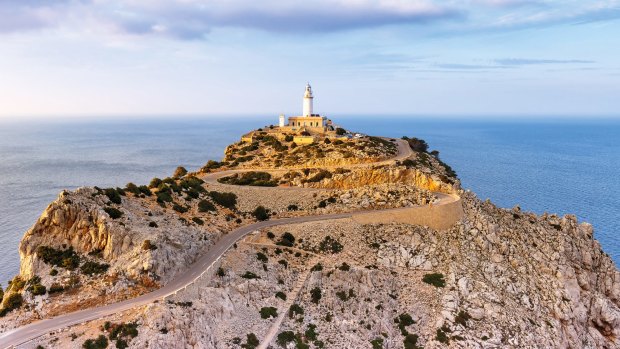
Mallorca's rugged coast.Credit: Markus Mainka
WHERE: SPAIN
START: Palma
FINISH: Cape de Formentor
DISTANCE: 155 kilometres
BEST TIME: Bad weather is low risk but in the middle of the day roads can become busy with cyclists
The high rises and loud bars of holiday hotspot Mallorca are the antithesis of the wild and rugged UNESCO World Heritage Site that forms the gorgeous core of this drive. Start in the capital, Palma and follow the road north towards the Tramuntana Mountains. As the majority of the traffic carries straight on for a tunnel, turn left and take the old road over the Coll de Soller. It snakes up through 21 switchbacks before descending through 30 more. It's a 10.5 kilometre up-and-over journey compared to just 1.2 kilometres if you take the tunnel, but the views are rather better. Puig Major is the highest point on Mallorca (1445 metres) and it's in that direction the road heads next. There's a real sense of climbing up into the Tramuntana range, and the feeling that you are leaving the rest of the world behind is exacerbated by the rough rock tunnel near the top. A last glance at the view back down to Soller, then into the dark mouth of the tunnel like Alice entering the rabbit hole. Emerging into the light again, turn left towards Sa Calobra. This dead-end road climbs, passes through a shallow cutting and then drops down through one of the most spectacular sequences of bends on the island. Head back and now go under the arches of the aqueduct. Thread through the mountains and drop down to pretty Port de Pollenca. See visitpalma.com; spain.info
SUSTAINABLE
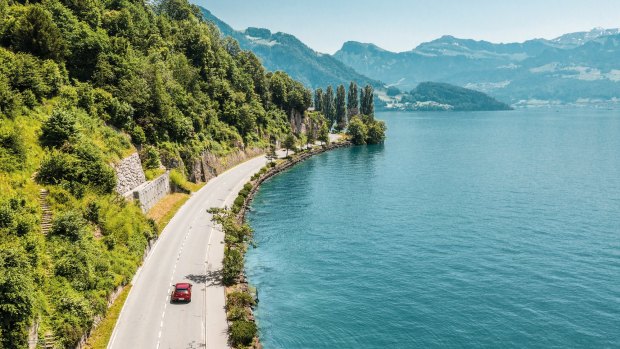
Cruising the shores of Lake Lucerne.Credit: Switzerland Tourism
WHERE: SWITZERLAND
START: Zurich
END: Bern
DISTANCE: 315 kilometres
BEST TIME: From May until September is the best time to avoid the snow and ice on alpine passes
The so-called Grand Tour of Switzerland is a 1600 kilometre route that shows off this proud little alpine nation's most flattering angles, whisking you from chic cities to UNESCO World Heritage Sites. The Alps often pop into view. The drive is entirely doable by electric vehicle, with plenty of charging stations along the way. But if it's too big for one trip, take the leg that links Zurich to Bern. Zurich is a city that never seems to miss a beat, from cool bars on the banks of the Limmat to its alley-woven Old Town. Take the road south, first stopping at Rapperswil, the mellow town at the tail end of Lake Zurich is straight from the pages of a bedtime story. Moving from one lake to the next, the road dips south to Einsiedeln on the shores of Sihlsee, with a huge Benedictine abbey that has drawn pilgrims for centuries. From there the mountains rise higher en route to Sattel, sitting astride placid, sapphire-blue lake Aegerisee. Continue on to Brunnen, clasped between craggy forested peaks on the shores of fjord-like lakes Lucerne and Uri. The Swiss capital Bern is your final stop, with its elegant arcades, flag-festooned Old Town, and Einstein legacy. Take a swim in the Aare River, a reminder that even when you are right in the heart of a city in Switzerland, nature is only ever a step away. See grandtour.myswitzerland.com; myswitzerland.com
ROMANCE
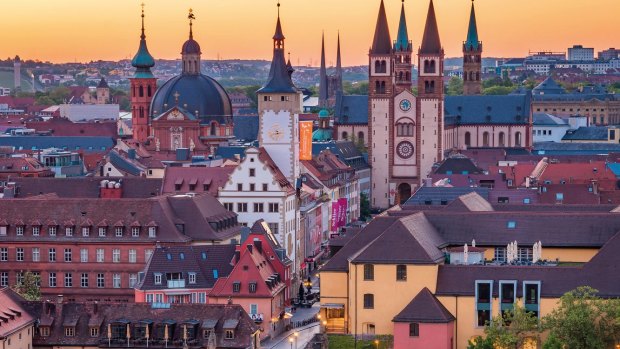
Wurzburg is the hub of the Franconian wine region.Credit: Alamy
WHERE: GERMANY
START: Wurzburg
END: Fussen
DISTANCE: 460 kilometres
BEST TIME: Travel midweek in May, June, September and October to avoid major crowds
Rothenburg ob der Tauber is the unofficial capital of the Romantic Road, a scenic ribbon weaving through vine-covered hillsides, sun-dappled pastures, river valleys, meadows smothered in wildflowers and Hansel-and-Gretel forests. It's an easy drive that connects storied villages, castles, churches, monuments, abbeys and palaces. In addition to its UNESCO-listed Residenz, a palace famous for its zigzagging grand staircase, the city of Wurzburg is also the hub of the Franconian wine region. Vineyards mix it up with fields of wheat and barley as you steer towards the Taubertal, a valley carved by the usually placid Tauber River. Stop in bucolic Bad Mergentheim, a spa town famous for its underground springs. Stop for a night in Rothenburg ob der Tauber – there are few places in Germany with such a perfectly cinematic medieval look. Continue on to Dinkelsbuhl, which has a similar olde-worlde vibe but is less overrun. Next is Nordlingen, another beautiful medieval settlement cradled by a fortified wall sitting smack within a massive crater gouged by a meteor some 15 million years ago. You might stop for another night in Augsburg, founded 2000 years ago as a Roman military camp under Emperor Augustus. By now, the Bavarian Alps have whipped into view and the Romantic Road reaches its climax at Neuschwanstein near Fussen, the archetypal fairy-tale castle dreamed up by Bavarian King Ludwig II and the primary inspiration for the one in Disney's Sleeping Beauty. See romantischestrasse.de; germany.travel
COASTAL
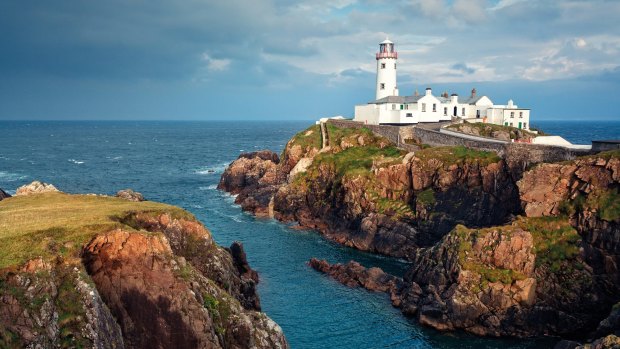
Fanad Head Lighthouse at Donegal.Credit: Andrea Ricordi
WHERE: IRELAND
START: Inishowen
END: Kinsale
DISTANCE: 2600 kilometres
BEST TIME: April to October is when it's marginally less inclined to rain
Ireland's west coast is battered by Atlantic rollers, strewn with jagged cliffs and littered with wide beaches and sandy coves. The Wild Atlantic Way is a 2600 kilometre route that traces all the twists, turns and crenulations of it. Begin on the Inishowen Peninsula in Donegal, which is a remote and rugged place that's also Ireland's most northerly point and an area peppered with traditional thatched cottages, ancient ruins and birdlife. Meander down Donegal's coastal roads past gloriously deserted beaches. Marvel at the 600 metres high Slieve League cliffs before heading south where you will spot the flat-topped monolith of Benbulben. At Enniscrone, unwind with a hot dip in an Edwardian seaweed bath. Pass the Ceide Fields, the world's most extensive Stone Age monument. Climb Croagh Patrick, Ireland's holiest mountain and be treated to a clear view of the islands of Clew Bay. Stop for a bowl of steaming Killary Harbour mussels at the head of the moody inlet and see salmon being smoked on the pier at Ballyconneely before watching the sun set over Dog's Bay. Vibrant, bohemian Galway soon gives way to the limestone fields of the Burren and the precipitous Cliffs of Moher. Take a ferry across the Shannon Estuary to drive the Ring of Kerry around Ireland's highest peaks. The scenery calms in prosperous West Cork before making the final push through picturesque villages to the narrow, winding streets of Kinsale, where gourmet restaurants tempt. See thewildatlanticway.com; Ireland.com
NATURE
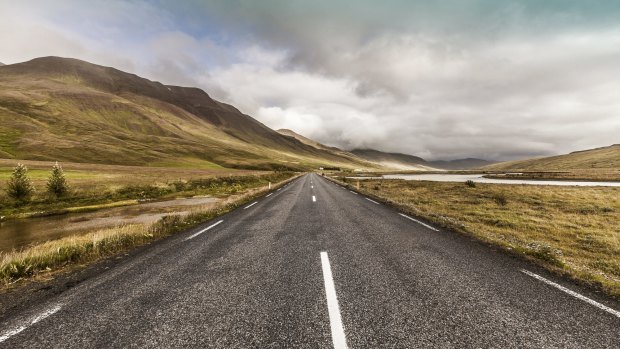
A section of the Ring Road encircling Iceland.Credit: Gary Latham
WHERE: ICELAND
START: Holmavik
END: Patreksfjordur
DISTANCE: 579 kilometres
BEST TIME: Summer offers passable roads but late autumn, before the snow, promises the northern lights
Explore Iceland's Westfjords over three days where puffins, Arctic foxes and the extremely elusive sea eagle can be spotted. While the drive takes you through tiny seaside towns the majority of the route is through wilderness. After passing Holmavík, the landscape empties of humans, looking much as it would have when the Vikings first settled here in the 800s. Arctic grasses poke through ice, eventually making way for mountains with scooped out peaks, known as troll seats by Icelanders. After several hours of following the natural contours of the land, reach Isafjorour and rest. Head north to Bolungarvík, a fishing town with a bright orange lighthouse and the Osvor Maritime Museum. The Hornstrandir Nature Reserve can be seen far across the fjord, only accessible by boat, it's the most reliable place in Iceland to spot a wild Arctic fox. Pull to the side and watch. They are curious and fearless and, being Iceland's only native mammal, they are at the top of the food chain. Stop at Simbahollin in Pingeyri, a tiny village overlooking the mouth of the Dyrafjordur fjord before Dynjandi, the largest waterfall of the Westfjords. The next day, skirting yet another fjord, arrive at Bildudalur where a road sign warns drivers to watch out for sea monsters. At Latrabjarg, on the westernmost point of Iceland, are cliffs over 15 kilometres long and 440 metres high where millions of seabirds, including puffins, gather. The trip ends in Patreksfjordur, a booming village with a public pool that overlooks the sea. See westfjords.is; visiticeland.com
This is an edited extract of Epic Road Trips of Europe, published this month by Lonely Planet. RRP $44.99 See lonelyplanet.com
SEVEN TIPS FOR DRIVING IN EUROPE
- Remember to drive on the right (with a few exceptions including Ireland). When in doubt, chant the words, "me, passenger, kerb" and visualise it. It works.
- In cities such as Rome, Florence, or Paris, collect your hire car and park outside the historic centre. The taxi or train fare to and from accommodation is worth avoiding the stress with some historic centres not allowing cars to enter anyway.
- Roundabouts in Europe can be big with multiple exits. If you miss your turn-off, don't stress, just go around again (and, if needed, again). Avoid any foolhardy sudden moves.
- Contrary to the way some drive, the autostradas are not race tracks. Don't get sucked into speeding by pushy truck drivers (hold tight, they'll pass you eventually) or all of those BMWs whizzing past.
- If you've got time, set the navigation app to "avoid tolls" to see where it takes you on the way to your destination. This can be particularly rewarding in Ireland where it can take you along bucolic backroads.
- When you stop for a refreshment or a comfort stop (or both) try and ask locals about side trips of interest. They may know a ruin, a church, a market or park that isn't in the guides or on Google search.
- Take your time. You are on holiday. Be present, careful, unrushed and calm. If you feel yourself getting flustered or tired, stop, rest and regroup. Like driving anywhere, safety should be paramount.
with Julietta Jameson
Sign up for the Traveller Deals newsletter
Get exclusive travel deals delivered straight to your inbox. Sign up now.